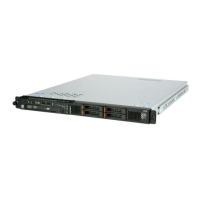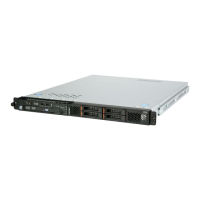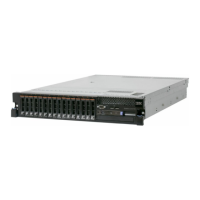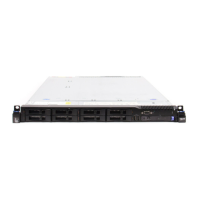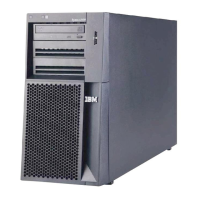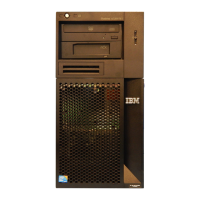An affordable single-socket, quad-core server with high performance
and data protection for small, medium, and large businesses
Please see the Legal Information section for important notices and information.
9
• System diagnostic LED control (power, HDD, activity, alerts, heartbeat)
• IPMI over LAN
• Serial Over LAN
• Proxy server support
• LAN messaging and alerting
• Predictive Failure Analysis for system fans
• Web-based out-of-band control
• SSL (Secure Socket Layer) and LDAP (Lightweight Directory Access Protocol) support
• Text console redirection over LAN
• VLAN support
• Enhanced authentication and encryption algorithms (RMCP+, AES)
• Latest OS failure screen capture
• Local update of IMM firmware
• Firmware firewall
• Support for IPMI v2.0 compliant management software (e.g., xCAT)
• Other optional IPMI commands
The IMM alerts IBM Systems Director to anomalous environmental factors, such as voltage
and thermal conditions—even if the server has failed.
The x3200 M3 also supports an optional IBM Virtual Media Key for additional systems
management capabilities, including:
• Graphical console redirection over LAN
• Remote virtual floppy and CD-ROM
• High-speed remote redirection of PCI video, keyboard and mouse
IBM ToolsCenter consolidates 42 needed tools for managing servers individually into an
integrated suite of 8 tools. They are organized by function: deployment, updates,
configuration and diagnostics. Tools are now simpler to access and use with a single
webpage for access, a common look and feel and a common command line interface for the
scripting tools. The ToolsCenter Bootable Media Creator offers significantly more
functionality than past tools with the ability to add more tools to the bootable image and to
automatically download the bootable environment if needed. Bootable Media Creator allows
you to create bootable CDs, DVD, and USB keys for updates customized to your systems.
IBM developed IBM Systems Director Active Energy Manager to put control of system
power-saving features at the fingertips of administrators. Active Energy Manager is designed
to take advantage of new features, such as monitoring power usage and balancing the
performance of the system according to available power input. It provides the ability to plan
and predict power consumption based on your hardware configuration. It also helps enable
you to reduce the infrastructure required for redundancy, by using fewer servers on smaller
power feeds and potentially lowering your overall data center support costs. It does this by
inventorying all components, then adding up the total power draw and tracking the usage. It
also includes power management features to help administrators manage or reduce power
usage.
Automatic Server Restart (ASR) helps reduce downtime by restarting the server
automatically in the event of a system lockup. ASR technology is a combination of hardware
circuitry tied into the server’s system reset function and a device driver. As long as the
server continues running, the ASR watchdog timer will keep being reset, but if the operating
system crashes or the hardware freezes somehow the ASR software will be unable to reset
the hardware timer. If the timer is not reset within five minutes, it automatically triggers the
ASR hardware, which immediately restarts the server (and logs an ASR event with IBM
Systems Director). These features are designed so that no more than five minutes can pass
before the server is restarted.
Wake on LAN permits the server to be remotely powered on if it has been shut off. Once
powered up, the server can be controlled across the network, using the Preboot Execution
Environment (PXE).
Like Wake on LAN, PXE is system firmware. It enables software such as the optional IBM
Remote Deployment Manager to take control of a system before the BIOS, operating
system or applications are loaded (using Wake on LAN/PXE) and lets an administrator
perform many low-level tasks remotely that would otherwise require a visit to each system.
These tasks may include such things as formatting a hard disk drive, updating system
firmware, or deploying a Windows or Linux operating system.
